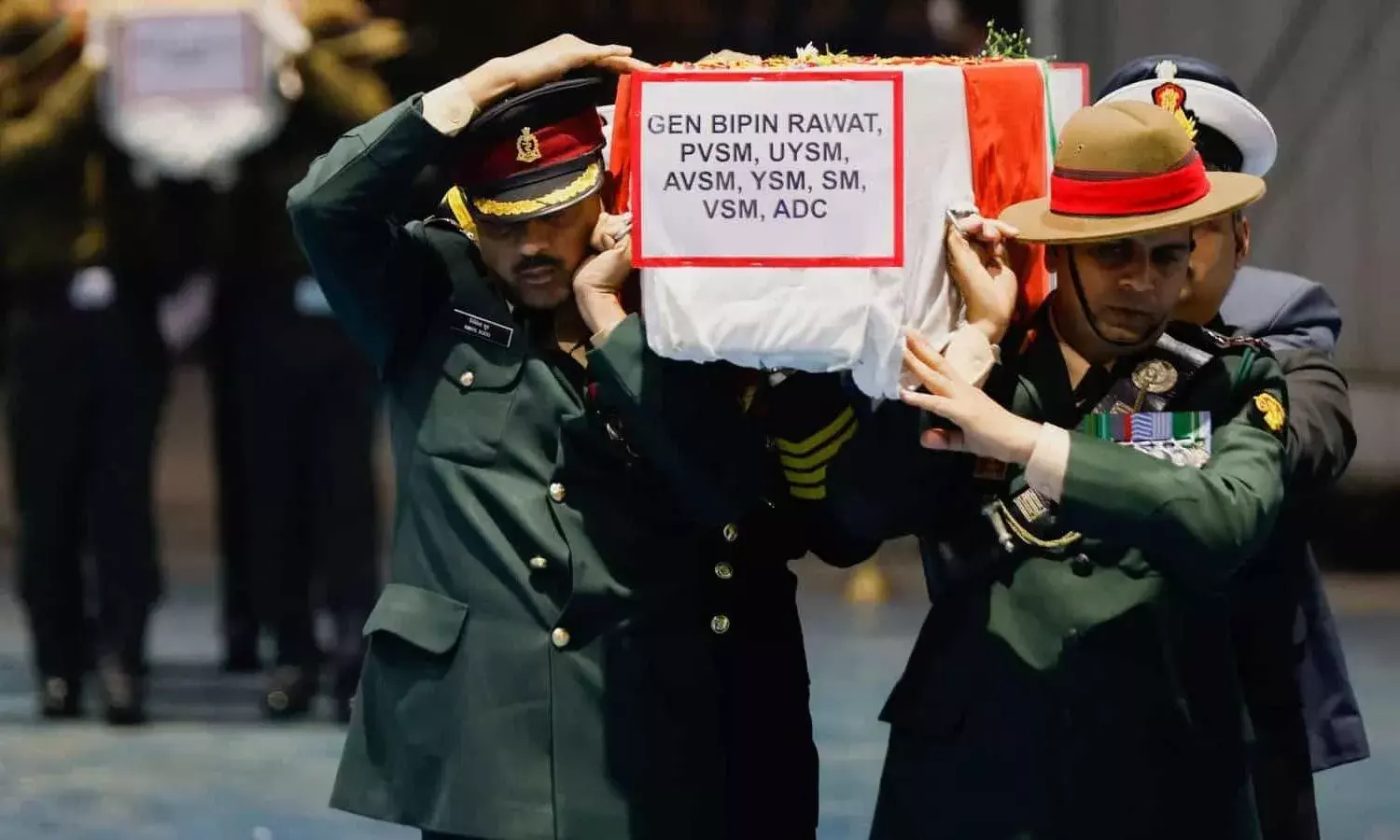
Some people just look the part. Maybe it was the rakish tilt of the Australian bush hat sported by the Gurkhas, and underneath it the broad, bluff, face, and a cheery confident demeanour. But the late, well respected, Bipin Rawat fit the cinematic image of the likeably tough, plain speaking infantry General.
General Rawat, heading the military affairs of the country as the first Chief of the Defence Staff died because of errors commited by a spatially disoriented pilot, not because of bad weather.
The crash in the Nilgiris of the Mi-17, the workhorse utility helicopter of the Indian military, that killed the CDS and others is already being attributed, a little too conveniently, to “weather conditions” by retired IAF officers on television programmes. The truth is that IAF stalwarts and the Service itself instinctively and institutionally shy away from blaming the real reason for many aircraft crashes — pilot error, because doing so, they believe, would reflect poorly on the training and competence of the pilots in question, and of IAF pilots generally.
Indeed, what may have really happened in Coonoor is this: The helicopter rose from the valley floor to 6,000 feet altitude in an attempt to clear the mountain tops for its final descent into the Wellington bowl crested by the Defence Services Staff College. But, in the light mist that was hugging the mountainside, a momentarily disoriented Wing Commander Prithvi Singh Chauhan piloting the craft simply flew into the mountainside instead of turning away from it. However, experienced the pilot, spatial disorientation is a fact of life and happens oftener than is admitted by authorities in India .
This rendering of the incident conforms with the eye witness accounts related on TV newscasts by tea plantation workers and others who witnessed the accident as it unfolded. One moment they saw a helicopter rising into view, the next a fireball as the plane rammed into the tall trees on the mountain slope, its rotors scything through them, even as the aircraft crumbled into a melted metallic mess.
A recent analog of the Rawat accident is the mishap that killed the Los Angeles Lakers basketball star, Kobe Bryant, and eight others in February this year. He was riding with his friends in a Sikorsky S-76B helicopter he had hired with a pilot with 10 years flying experience and over 8,500 flying hours on this type of aircraft. Taking off in clear skies from an Orange County airport in southern California Kobe’s helicopter veered towards the Pasadena Hills where they were supposed to alight. Except, the hills skirting the Pacific Highway suddenly shrouded over by mist rolling in from sea is where the disoriented Sikosky pilot, misjudging his landing site, slammed his aircraft into the hillside, failing to clear the top by some 30 feet.
During a public hearing held by the US National Transportation Safety Board (NTSB) to consider the likely cause of this crash, its chairman Robert Sumwalt said the pilot most likely suffered from an episode “of spatial disorientation,” described by him as “the powerful, misleading sensations that can confuse a pilot conducting a visual flight who loses visual references, and what types of training can be effective in countering this effect.” “We have seen this accident before, unfortunately,” confrmed NTSB board member Michael Graham. “Helicopters continue the VFR (visual flight rules) flight into meteorological conditions and unfortunately lose control of the aircraft due to spatial disorientation.”
The country has lost a good man, a good soldier and solid miltary leader in Rawat. His loss is not going to be mitigated by the IAF blaming the weather for it. The Indian Air Force has to become more responsible and to begin assessing realistically why air accidents occur in the country, and why pilot disorientation in flight — not at all an unusual phenomemon, is not acknowledged as the prime cause for the many fatal crashes its aircraft annually suffer. Advanced air forces have no problem owning up to the occasionally spatially disoriented pilots crashing aircraft.
Hopefully. starting with the ‘Court of Inquiry’ looking into this Mi-17 mishap, the IAF will begin to honestly accept and possibly acknowledge pilot error in terms of sheer disorientation as the reason for such aircraft accidents.

